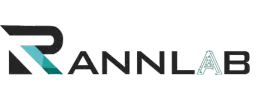The internet is constantly evolving. From Web 1.0, which gave us static pages, to Web 2.0, which introduced social media and interactivity, each era has changed how we live and work.
Now, Web 3.0: The Next Evolution of the Internet That Will Transform Your Future in 2025 is here. Unlike earlier versions, Web 3.0 is decentralized, transparent, and user-driven. Built on blockchain, artificial intelligence (AI), and the semantic web, it promises to put control back into the hands of users instead of corporations.
Key Features of Web 3.0
Some key features defining Web 3.0: The Next Evolution of the Internet include:
Decentralization: Information isn’t stored by one company but across multiple blockchain networks.
Blockchain Technology: Ensures trust, security, and transparency.
Artificial Intelligence: Enhances personalization and automation.
Semantic Web: Enables machines to understand and process data intelligently.
Digital Assets (Crypto & NFTs): Empower users to own and trade assets securely.
Interoperability: Systems and applications can interact seamlessly across platforms.
Web 2.0 vs Web 3.0
Here’s how Web 3.0: The Next Evolution of the Internet compares with today’s internet:
| Feature | Web 2.0 (Today) | Web 3.0 (Future) |
|---|---|---|
| Control | Centralized by tech giants | Decentralized via blockchain |
| Data Ownership | Platforms control user data | Users own and control their data |
| Transactions | Managed by intermediaries | Peer-to-peer using crypto |
| Content | User-generated | AI-enhanced and user-owned |
| Security | Vulnerable to hacks | Strong blockchain protection |
Benefits of Web 3.0: The Next Evolution of the Internet
User Empowerment: Individuals control their digital identities and data.
Greater Privacy: Blockchain minimizes risks of unauthorized data access.
Transparency: Open protocols ensure fairness.
Global Financial Access: Cryptocurrencies remove borders in finance.
Innovation: Developers can create decentralized applications (dApps) without relying on big corporations.
Examples of Web 3.0 in Action
Real-world platforms already highlight Web 3.0: The Next Evolution of the Internet:
Ethereum: Powers decentralized finance (DeFi) and NFTs.
Polkadot: Enables smooth interoperability across blockchains.
Brave Browser: Rewards users with cryptocurrency for viewing ads.
Decentraland: A blockchain-based virtual world owned by users.
Discover more about Ethereum here (external do follow link)
If your business wants to embrace Web 3.0 technologies, RannLab Technologies offers innovative IT solutions that help organizations step confidently into the future.
Challenges of Web 3.0
Even though Web 3.0: The Next Evolution of the Internet is exciting, it faces challenges:
Scalability: Blockchains are still slower than centralized systems.
User Experience: Complex interfaces make adoption harder.
Regulation: Governments worldwide are still drafting policies.
Energy Consumption: Some blockchain platforms use large amounts of energy.
The Future of Web 3.0: The Next Evolution of the Internet
Industries will be transformed by Web 3.0 in the coming years:
Finance: DeFi systems reducing reliance on banks.
Healthcare: Secure and transparent medical records.
Education: Blockchain-powered digital certificates.
E-commerce: Direct peer-to-peer commerce without middlemen.
As blockchain, AI, and IoT converge, Web 3.0: The Next Evolution of the Internet That Will Transform Your Future in 2025 will redefine how people interact online.
Final Thoughts
The journey from Web 1.0 to Web 3.0 reflects the internet’s unstoppable progress. By giving power back to users and enabling transparency, security, and ownership, Web 3.0: The Next Evolution of the Internet is set to reshape the future.
To prepare for this shift, explore decentralized platforms and partner with RannLab Technologies for digital solutions that align with tomorrow’s internet.
FAQs about Web 3.0
Q1: What is Web 3.0 in simple terms?
Web 3.0 is the next version of the internet, focused on decentralization, blockchain, and user ownership.
Q2: How does Web 3.0 differ from Web 2.0?
Web 2.0 relies on big corporations for control, while Web 3.0 distributes power to users through blockchain.
Q3: Is Web 3.0 already here?
Yes, some platforms like Ethereum and Brave Browser are early examples of Web 3.0: The Next Evolution of the Internet.

